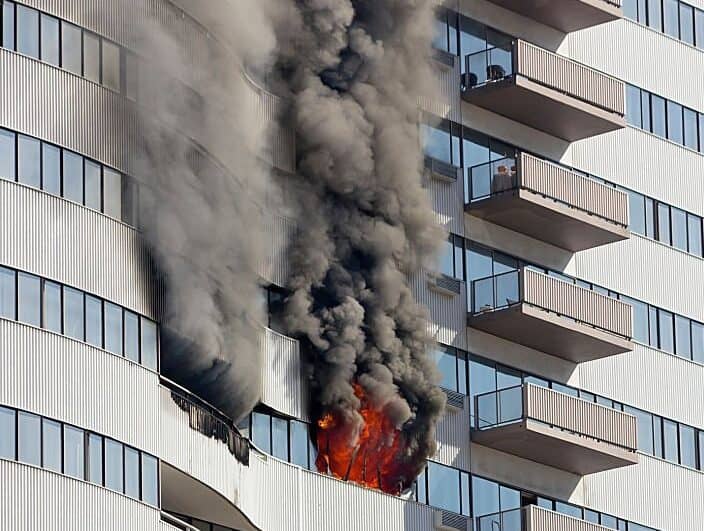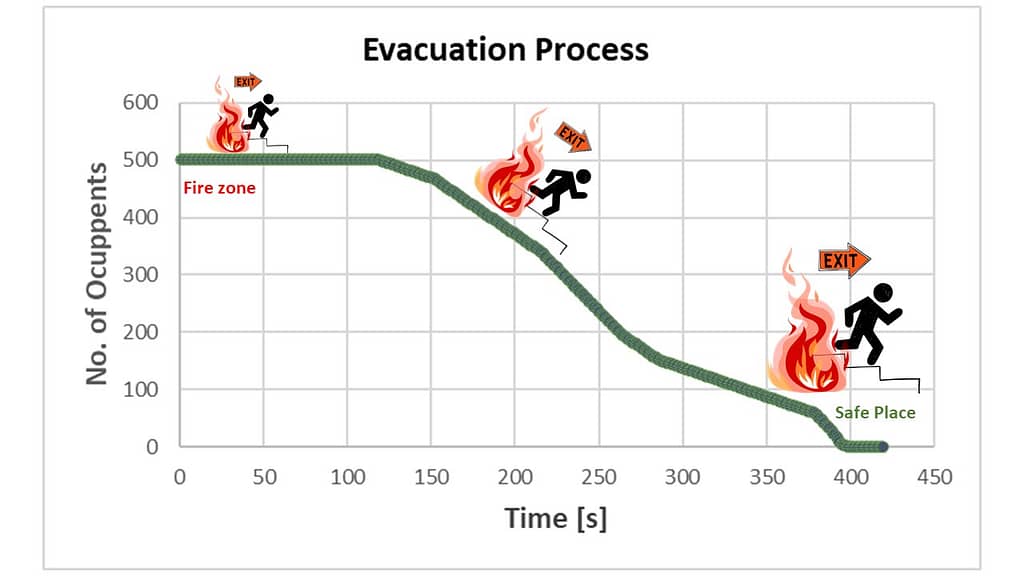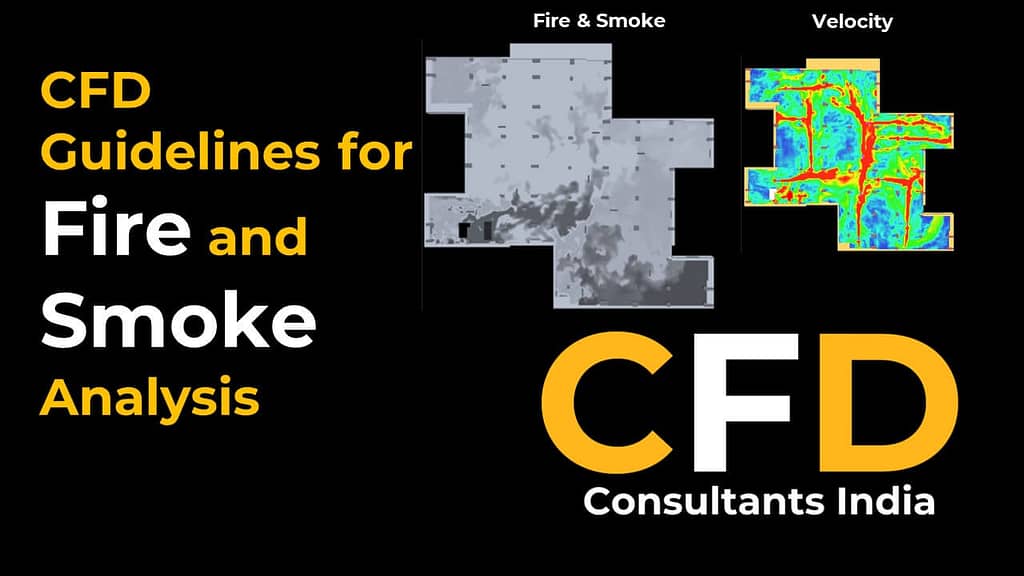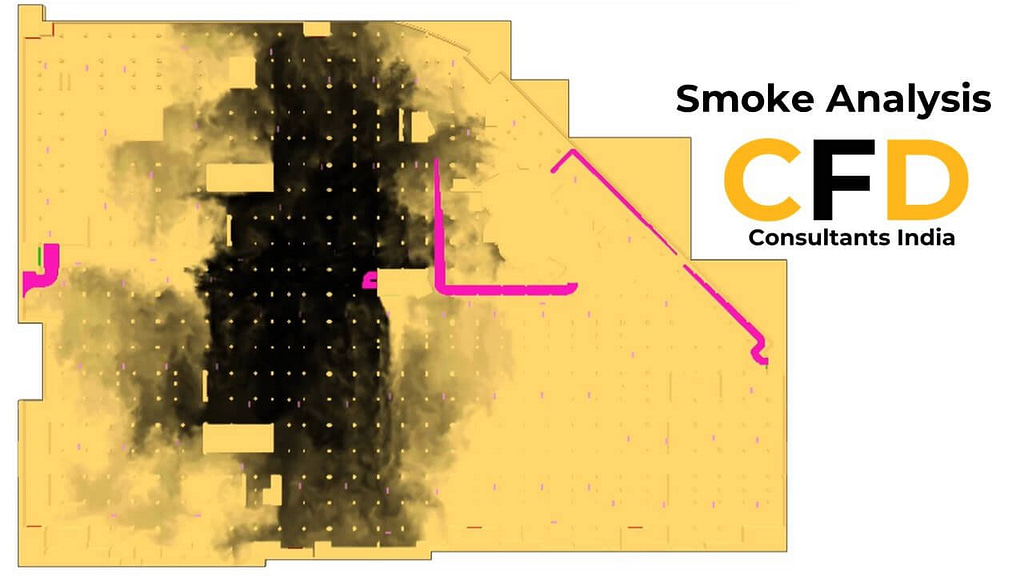
Fire & Smoke Ventilation
Our CFD analysis ensure the safety of occupants, compliance with regulations, and the efficient operation of ventilation systems in the event of a fire and smoke in residential buildings, atriums, road tunnels, car park basements and commercial offices etc.
Computational Fluid Dynamics (CFD) analysis for fire and smoke ventilation is crucial in modern building design and safety for several reasons:
Safety
Fire and smoke can pose significant threats to the safety of building occupants. CFD analysis helps engineers and architects design ventilation systems that effectively remove smoke and provide safe escape routes in the event of a fire.
Compliance
Many building codes and regulations require a thorough analysis of fire and smoke behavior, including how smoke is managed and removed from a structure. CFD simulations can help demonstrate compliance with these requirements.
Design Optimization
CFD allows for the simulation and analysis of different ventilation system designs, enabling architects and engineers to optimize the placement of vents, ducts, and fans to ensure the efficient removal of smoke in case of a fire.
Smoke Movement






CFD can help in designing smoke ventilation systems that are energy-efficient, reducing the operational costs associated with ventilation while ensuring safety. CFD analysis can simulate how smoke would spread in a building during a fire and how this might impact evacuation routes. This information can be invaluable for developing effective evacuation plans. CFD analysis can help identify potential trouble spots where smoke might accumulate or escape routes might be compromised. By addressing these issues during the design phase, it’s possible to mitigate risks associated with fire and smoke.
Temperature Profile







CFD can help verify that the designed ventilation system will function as intended during a fire event. This is critical to ensure that building occupants will have a safe means of egress in case of a fire. CFD analysis is not limited to new construction. It can also be used to assess and improve the fire and smoke ventilation systems in existing buildings, making them safer for occupants. Large, open spaces like shopping malls, airports, and sports stadiums often require specialized smoke control systems. CFD can help optimize the design of these systems to ensure smoke is effectively managed.
Visibility Profile






In addition to above, CFD can quantitatively assess visibility levels within the affected areas during a fire event. This data is crucial for ensuring safe egress and evacuation. That assists in designing emergency lighting systems. Engineers can determine where lighting should be placed to maintain adequate visibility in smoke-filled areas. CFD is used in research and development to study and understand fire and smoke behavior, helping to improve fire safety standards and practices. In summary, CFD analysis for fire and smoke ventilation is needed in modern building design and safety to ensure the safety of occupants, compliance with regulations, and the efficient operation of ventilation systems in the event of a fire. It plays a vital role in optimizing building designs, minimizing risks, and improving overall fire safety.
Evacuation Simulation

In the event of smoke and fire, engineers calculate Available Safe Egress Time (ASET) and Required Safe Egress Time (RSET) for evacuation analysis to ensure the safety of building occupants during emergencies. These two calculations are crucial for evaluating whether there is enough time for people to safely evacuate a building or space. Here’s why engineers use ASET and RSET:
ASET (Available Safe Egress Time)
- ASET represents the time available for building occupants to safely evacuate before conditions, such as smoke or heat, become life-threatening.
- Engineers calculate ASET by assessing factors like the rate of smoke and heat generation, the effectiveness of smoke control systems, and the time it takes for these conditions to become hazardous.
- ASET helps determine the amount of time occupants have to reach a safe location or exit the building
RSET (Required Safe Egress Time)
- RSET is the time required for all occupants to safely evacuate from the building, considering factors like the number of people, their mobility, and the complexity of the evacuation routes.
- Engineers calculate RSET by analyzing the building’s layout, the number of occupants, and the capacity of egress routes.
- RSET represents the time needed to ensure that everyone can exit the building without undue risk during an emergency.
Output Parameter for CFD of "Smoke and Fire Ventilation"
Available Safe Egress Time (ASET)
Required Safe Egress Time (RSET)
Ventilation System Performance
Smoke Movement
Visibility Profile
Temperature Profile

Explore essential CFD guidelines for accurate and reliable fire and smoke analysis. Learn how to determine fire size, specify fire types, account for obstructions, and more to enhance fire safety in various scenarios.

Your CFD Partner in UAE
Consider partnering with us for your CFD projects in the UAE. We provide swift, budget-friendly, and quality-focused CFD consultation services

Smoke Analysis CFD
By applying CFD to smoke analysis, designers can predict smoke movement for various ventilation setups, and building geometries.
Let's stay in touch!
To get recent updates, stay connect us on our LinkedIn page! Don’t hesitate to reach out to us for any questions, concerns or future collaborations
Contact Us
We are here to help! With just a quick input details we will be able to respond to your inquiry.
E-Mail: info(at)cfdconsultantsindia.com

CFD Consultants India a leading provider of CFD simulation consultation and services. We use finite volume computation technique to predict the flow behavior using various commercial CFD software’s. At CFD Consultants India, we understand the importance of accurate and reliable CFD simulations in the design and development process. With years of experience and expertise in the field, we offer customized solutions to meet your specific requirements and help you achieve your goals.
Whether you are looking to optimize your product design, improve performance, reduce costs, or enhance safety, CFD Consultants India can help. Contact us today to learn more about our services and how we can help you achieve your goals.
© Copyright CFD Consultants India 2023 | All rights reserved.
